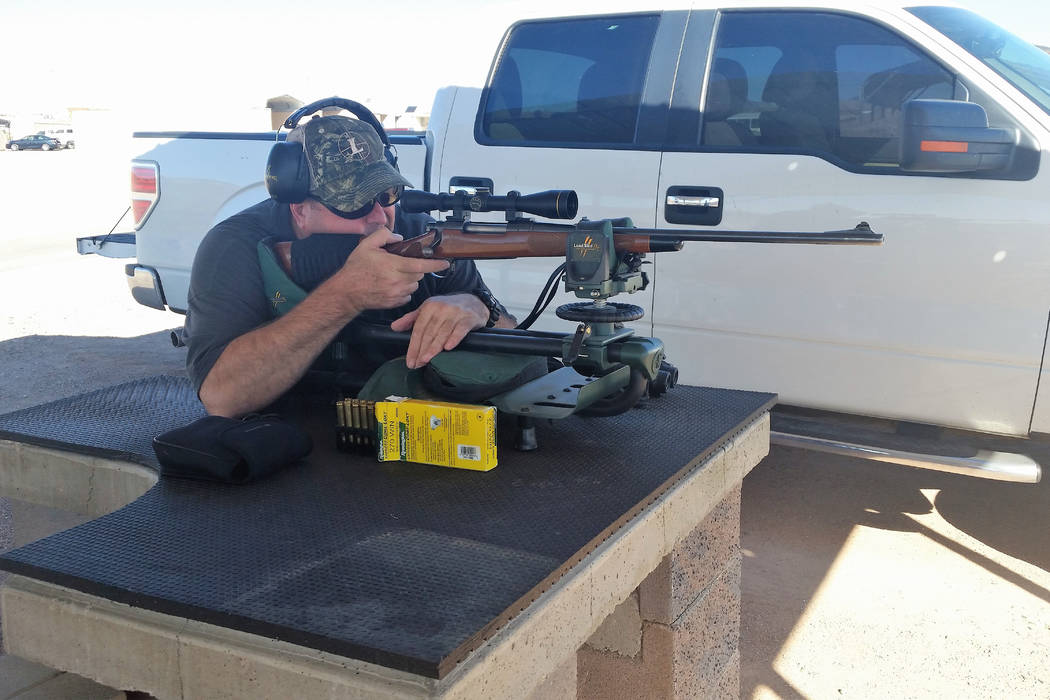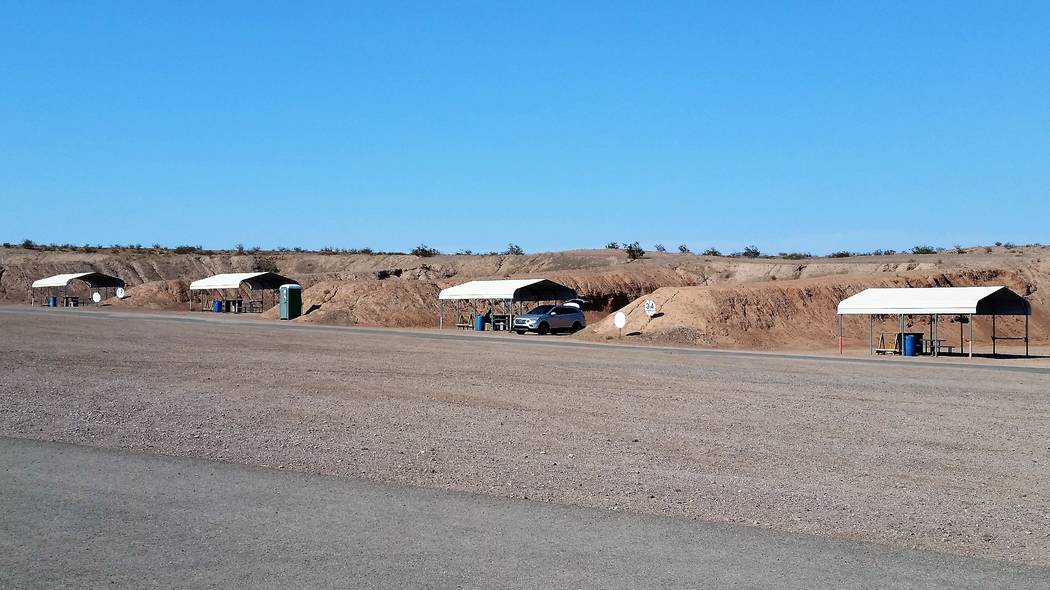4 Las Vegas area shooting ranges offer safe places to practice
With big game hunting seasons looming on the horizon, anyone with a big game tag will need to spend time practicing on the shooting range before their season begins.
There was a time when one could drive to the edge of civilization in the Las Vegas Valley, find a safe place to set up an impromptu shooting range and practice to your heart’s content. And we did.
But with more than 2 million people now living in the valley, those days are long gone. The places we went back then are either covered by development or fall within the boundaries of regulatory closures to the discharge of firearms.
Luckily, there are four outdoor shooting ranges located within 30 minutes of downtown Las Vegas depending on traffic. These ranges will all accommodate rifle, muzzleloader and handgun shooters, and in some cases archers. On the list are the Clark County Shooting Complex, Desert Sportsman’s Rifle and Pistol Club, Pro Gun Club and Boulder Rifle and Pistol Club.
There are positives and negatives to each of these facilities, but all provide hunters with a safe and legal place to shoot.
— As its name implies, the Clark County Shooting Complex is a publicly owned facility. It is managed by the county’s Park and Recreation Department, open to all shooters and operated under the watchful eyes of certified range safety officers. Depending on their sight-in or practice needs, shooters can take advantage of distances ranges measuring 50, 100 and 200 yards.
Open hours are seasonal. From June 1 through Sept. 30 the range is open from 7 a.m. to 10 p.m. on Wednesdays and Thursdays. On Friday, Saturday and Sunday the hours are 7 a.m. to 5 p.m. It is closed to public shooting on Mondays and Tuesdays.
The cost to shoot on the firearm range is $9 per adult but is free for juniors under 18 years of age. Archers pay $7 to shoot on the known distance range and $10 if they also want access to the 3-D Course.
— Desert Sportsman’s Rifle and Pistol Club opened its gates in 1959, but only to members and their guests. This is a National Rifle Association affiliated range, so membership in that organization is a prerequisite for club membership. Annual fees are $15 for youth ages 8-18 years, $200 for adults 19-59 years, and $75 for shooters 60 years old and older.
Ten well-groomed ranges provide shooters with multiple distance options ranging from 25 to almost 900 yards. The physical facility is located at 12201 W. Charleston Blvd. and its Internet address is dsrpc.org.
— Pro Gun Club is located off Highway 95 just south of Boulder City. This too is a membership range, but it does allow non-members to use its facilities. Nevada residents pay $15 to shoot on the rifle range while members shoot for free. Others pay $20.
The public rifle range will accommodate as many as 12 shooters at a time and is marked at 25-yard intervals to facilitate sighting-in to a maximum of 200 yards. In addition, the range offers five utility bays ranging from 25 to 100 yards deep. A standard Pro Gun Club membership is $300. The club’s webpage can be found at progunclub.com.
— Also located in Boulder City is the Boulder Rifle and Pistol Club, a non-profit facility operated by volunteers who enjoy the shooting sports. Though membership is required to access much of what this facility offers, there is a courtesy range available to the public. It offers shooters the chance to practice in one of 12 shooting bays that range in distance from 25 to 200 yards.
The courtesy range is open on Tuesday, Thursday, Saturday and Sunday, and on Mondays that are Federal holidays. Open hours are 8 a.m.-4 p.m. The cost is $10 per shooter for two hours of range time and visiting shooters must check in with the range safety officer before proceeding to a shooting bay.
This facility hosts multiple special events each month, so you may want to check the calendar on its website to insure there are no conflicts before heading that direction. It can be found at www.brpc1.org .
No matter which range you choose to use, be sure to follow all range rules and pick up your mess before leaving for home.
Freelance writer Doug Nielsen is a conservation educator for the Nevada Department of Wildlife. His “In the Outdoors” column, published Thursday, is not affiliated with or endorsed by the NDOW. Any opinions he states in his column are his own. He can be reached at intheoutdoorslv@gmail.com.





























